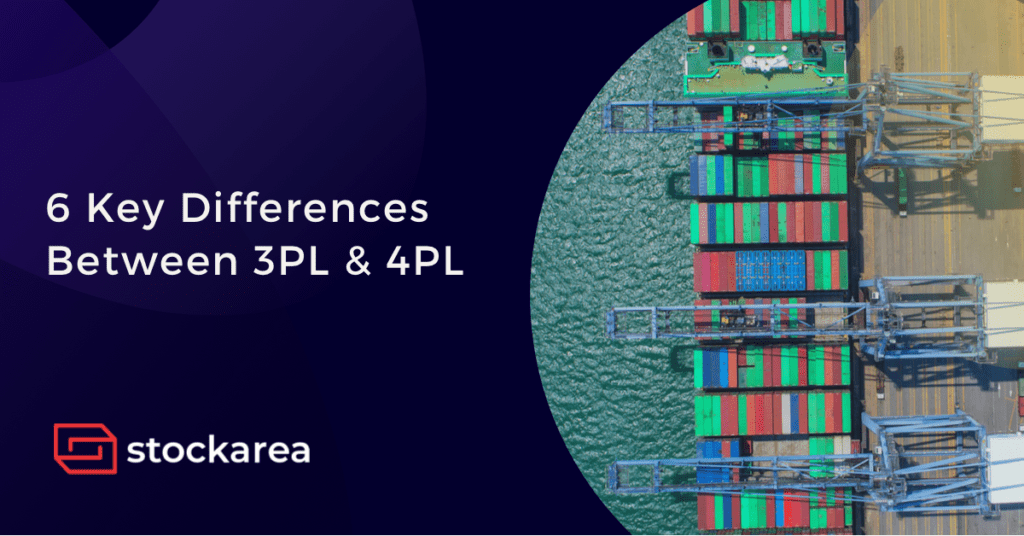Businesses that don’t have their supply chains properly streamlined will be left behind as the environment evolves and customers demand a faster, cheaper, and more transparent shopping experience. The 3PL and 4PL landscape offers the perfect opportunity for organizations that lack the resources, bandwidth, or knowledge to improve their internal warehouse and fulfilment processes.
Regardless of the size of your organization, you have alternatives for managing your supply chain. While a 4PL can manage the entirety of your supply chain, the most prevalent type of logistics business is a 3PL. The ideal 4PL partner will go beyond fulfilment by assisting you in optimizing your supply chain and helping you in making more informed business decisions. However, even the 3PL providers take logistics services to a higher level because they are inherently more involved in business operations. They constantly work to enhance the supply chain operations of their clients. The commitment between 3PL suppliers and their clients is long-term and extends beyond transactional terms.
What is 3PL?
3PL is a solution that allows you to outsource your operational logistics from warehousing to last-mile delivery, allowing you to concentrate on other aspects of your business. A variety of supply chain logistics-related services is provided by third-party logistics organizations. It includes operations like transportation, warehousing, picking and packing, inventory forecasting, order fulfilment, packaging, and freight forwarding.
What is 4PL?
A fourth-party logistics (4PL) provider is an integrator who manages all aspects of the supply chain. Beyond physical logistics, a 4PL can incorporate information technology, procurement, and finance aspects. A 4PL can contract with one or more 3PLs to manage physical commodities and offer customized services to end customers.
6 Key Differences Between 3PL & 4PL
1. Distribution
3PL services are a subset of what a 4PL provider offers. A 3PL partner handles the actual transportation, storing, and distribution of your inventory, allowing you to make logistics decisions. A 4PL organization, on the other hand, supervises the complete logistics operation, from strategic decisions to legal documentation to operations execution. Most 4PLs have a diverse network of warehouses, frequently incorporating multiple 3PLs to provide merchants with complete shipping, storage, and geographical coverage.
2. Customer Interaction
4PL is the merchant’s primary point of contact. Therefore, all communication with the various 3PLs is channelled through the 4PL. This can delay addressing concerns, as the 4PL acts as a mediator between the customer and the 3PL. There is no ownership at the 3PL level with this form of customer service, which can be a frustrating experience for the end customer. You gain access to the same customer service staff when you partner with a 3PL and a dedicated account manager. This way, issues are fixed more quickly, and you can deal with a knowledgeable team with your account.
3. Strategic Scalability
With 3PLs, merchants are typically bound by long-term contracts that impose more significant limits on the amount of storage space and order volume that may be fulfilled. However, contracts and service agreements are very scalable with 4PLs. In terms of scalability, 4PLs can swiftly add warehouses to their network, allowing retailers to quickly extend their distribution network. With 4PL, customers pay for only the resources when they require them on-demand and can cut down their operational costs.
4. Order Fulfilment
A third-party logistics provider concentrates on order fulfilment, including warehousing, picking and packaging orders, and shipping parcels. A fourth-party logistics provider takes this a step further by managing the complete supply chain, including fulfilment, transportation, and technology. A merchant works directly with a 4PL company to resolve issues throughout the supply chain and with other vendors.
5. Integrated Technology
4PLs often operate via a cloud-based warehouse management system (WMS), which provides merchants with visibility into order receipt, fulfilment, and delivery statuses across all of their locations. This software also links with e-commerce platforms and enterprise resource planning (ERP) systems to provide automated reporting. On the other hand, a tech-focused 3PL provider have developed ways to streamline shipping and order fulfilment to satisfy the needs of sellers, frequently utilizing cutting-edge information technology technologies. They are also able to provide software that can integrate data from multiple sources to give both the seller and the consumer a complete view into the lifecycle of the order fulfillment process and help with the decision making process.
6. Professional Assistance
Today’s finest 4PLs will provide customer care that goes beyond essential support and will offer merchants strategic guidance on optimizing their inventory and distribution management. Alternatively, traditional 3PL assistance is typically confined to responding to simple enquiries and resolving day-to-day operating difficulties
Related posts
- 10 Best Third-Party Logistics (3PL) Companies In Chennai
- Just-in-Time (JIT) Inventory Management
- 10 Best Third Party Logistics (3PL) Companies In Bangalore [2024]
- Guide To 3PL In Reverse Logistics
- 8 Best Third-Party Logistics (3PL) Companies In Delhi
- 10 Best 3PL Companies In Rajkot In 2025
- Everything You Need To Know About FTL Shipping
- 7 things to consider when choosing a 3PL partner
- Distribution Channels: Types, Methods & Best Practices
- 6 questions you should ask before choosing a 3PL provider
- Navigate Supply Chain Disruptions With Digitalization
- A Complete Guide On Value Chain And Its Components
- The Ultimate Guide On Third-Party Logistics (3PL)
